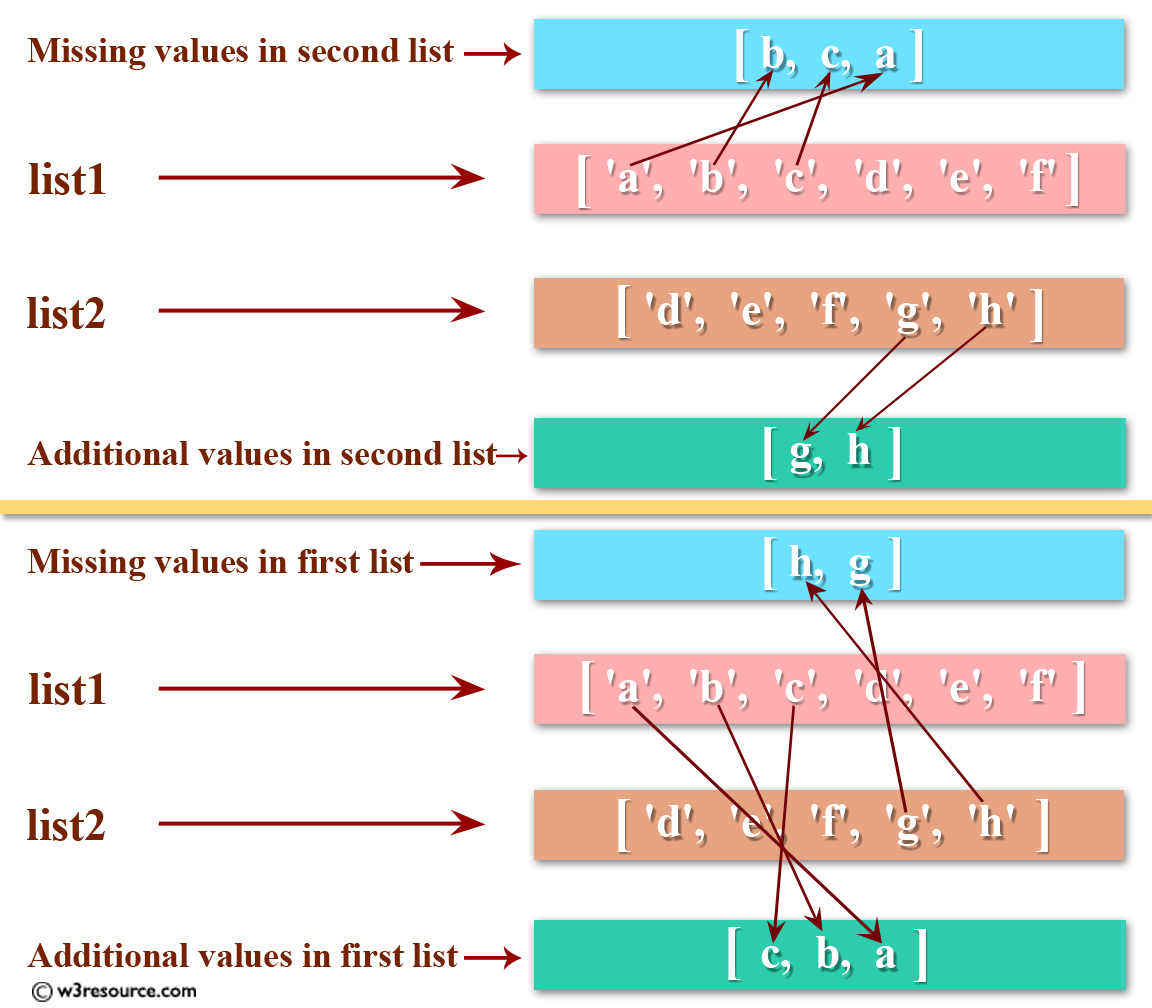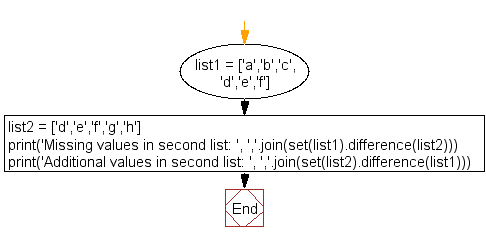Python: Find missing and additional values in two lists
Find Missing and Additional Values in Lists
Write a Python program to find missing and additional values in two lists.

Sample Solution:
Python Code :
# Define two lists 'list1' and 'list2' containing elements
list1 = ['a', 'b', 'c', 'd', 'e', 'f']
list2 = ['d', 'e', 'f', 'g', 'h']
# Calculate the missing values in 'list2' by finding the set difference between 'list1' and 'list2'
missing_values = set(list1).difference(list2)
# Print the missing values in the second list 'list2'
print('Missing values in the second list: ', ','.join(missing_values))
# Calculate the additional values in 'list2' by finding the set difference between 'list2' and 'list1'
additional_values = set(list2).difference(list1)
# Print the additional values in the second list 'list2'
print('Additional values in the second list: ', ','.join(additional_values))
Sample Output:
Missing values in second list: b,c,a Additional values in second list: g,h
Flowchart:

For more Practice: Solve these Related Problems:
- Write a Python program to identify missing values from multiple lists.
- Write a Python program to find additional values present in one list but missing in another using set operations.
- Write a Python program to compute the symmetric difference between two lists.
- Write a Python program to count the missing values when comparing two lists.
Go to:
Previous: Write a Python program to create multiple lists.
Next: Write a Python program to split a list into different variables.
Python Code Editor:
What is the difficulty level of this exercise?
Test your Programming skills with w3resource's quiz.
